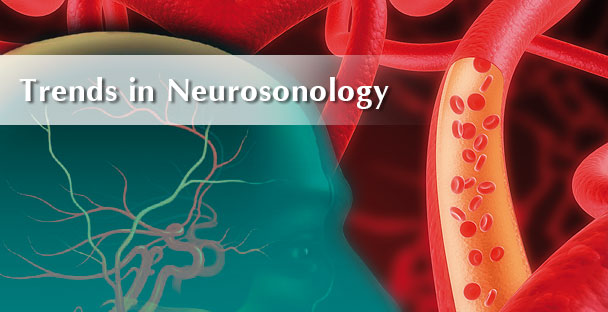
21 März 2022 TCD diagnosis for Head Injury, Dementia, Parkinson, and more
Multifaceted capabilities of TCD diagnostic for cerebrovascular diseases
By the multifaceted possible capabilities of the Doppler sonography there arise a numerous of application fields in many different sectors of medicine for TCD diagnostics. Plenty of scientific studies and trials about the use of TCD diagnostics for different cerebrovascular diseases has been issued, always with the ambition to develop innovations in patient care and human health.
Sonothrombolysis
Intravenous tissue plasminogen activator (rt-tPA) therapy can be monitored with 2 MHz transcranial Doppler (TCD). Transcranial Doppler ultrasonography (2 MHz) that is aimed at (residual) obstructive intracranial blood flow may help expose thrombi to tissue plasminogen activator (t-PA). Gaseous microspheres, initially developed as ultrasound contrast agents, can further increase the effectiveness of rt-PA. Latest research focusses on tPA-loaded microbubbles (MB) to improve efficiency.
Dementia
Cerebrovascular disease may contribute to the development and progression of Alzheimer’s disease (AD). It is subject to research, to determine if TCD allows differentiation between Alzheimers disease and vascular dementia and if TCD is helpful in early diagnosis of both.
ICP Brain Pressure
Transcranial Doppler-derived indices of cerebral autoregulation are related to outcome after head injury. TCD measurements on patients admission (pulsatility index, Mx, Sx, …) are suggested to have a correlation with raised intracerebral pressure. It is subject to recent research to determine this hypothesis.
Parkinson
Orthostatic hypotension (OH) is one of the many autonomic disturbances observed in Parkinson‘s disease (PD). It has been debated whether an additional impairment of cerebral autoregulation (CA) in PD patients may exacerbate the consequences of OH upon brain perfusion.
Reanimation
The brain is the human organ, which is most sensitive to hypoxia. Hence, the brain perfusion is the major success parameter during cardio-pulmonary resuscitation (CPR). An assessment of effectiveness is usually only possible by evaluation of clinical signs (e.g. pupil width) or plethysmographic derived peripheral oxygen saturation (Cave: good specificity, worse sensitivity). TCD offers a method to derive intracerebral blood flow velocities as a parameter of cerebral perfusion with a high temporal resolution (beat-to-beat) (Blumenstein et al., 2010).
In the last years, an interesting scientific focus was on evaluation of blood flow patterns following successful CPR (ROSC = return of spontaneous circulation) to assess patient´s clinical outcome. Alvarez-Fernandez postulated in 2011 that TCD examinations might help to identify irreversibly neurologically impaired patients after ROSC to reduce unreasonable and ineffective treatment, which may have harmful side effects. Previously, also Wessels et al. (2006) could demonstrate a significant association between TCD parameters and prognosis following ROSC.
It is noncontroversial that a real-time TCD monitoring is a valuable parameter of cerebral blood flow.
